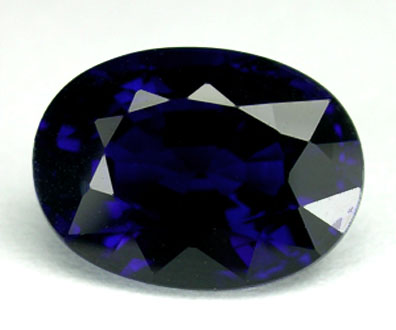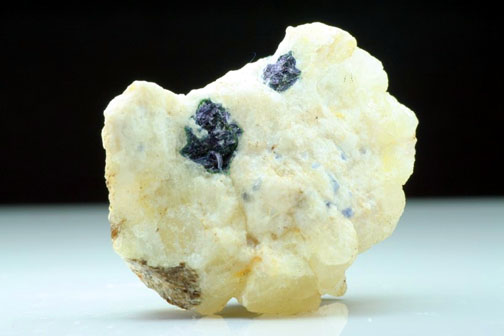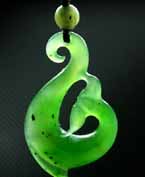Rubies are red, sapphires are blue. They are also yellow, green, orange, pink . . . pretty much every color of the rainbow. Except red. Because a red sapphire is a ruby; the two are both gem varieties of corundum, the only difference being rubies get their color from chromium impurities and sapphires get theirs from iron and titanium.
Why should you care? If you are planning on buying jewelry in Thailand – outside of the incredible bargains you’ll get by asking a tuk tuk driver to take you to a jewelry store – your best buy is gonna be on gemstones grown in the country. That’d be amethyst, aquamarine, garnet, and spinel (a dark red stone often confused with ruby). And of course rubies and sapphires. But most of the rubies you’ll find are from Burma. And sapphires are what Thailand is really known for.
Sapphires are the most popular color gemstone in the world, second only to diamonds. A most sought after gem for thousands of years, sapphires are the second-hardest gemstone, making them very very durable, and when cut to the proper proportions, they sparkle and dance in the light.
Most people think of blue when they think of sapphire. Except Pattaya expats who tend to think of gin. Generally, sticking to blue is the way to go when buying a sapphire. If you want a yellow stone citrine will be less expensive and the color will be better. If green is your color stick to emeralds. Or jade when you realize a quality emerald is more expensive than a diamond of the same grade and size. I shouldn’t need to tell you that you should never ever be thinking of buying an orange stone, so we’ll pass on other options, and if ya gotta go pink you’re back to a ruby but a cheap one. For blue, nothing beats the color of a sapphire, and the only non-opaque sapphire you should ever be considering is blue. If you are going to pay the price that sapphire commands, blue is the only way to go.
Even with blue sapphires you have a range of options. They come in various shades from a pale, cornflower blue to #0000FF, to a dark, inky blue that almost looks black. The value of a sapphire is based on the purity of blue, known as the hue (and sometimes the color) not on which shade of blue it is. Thai sapphires are a deep blue, with the cheaper stones appearing almost black. They are mined in the Chanthaburi region south east of Bangkok, which is also home to a large gem market; it is estimated that 80% of the world’s supply of ruby and sapphire passes through Chanthaburi.
While most of the mines in Chanthaburi have been mined out, about twenty years ago the town’s gem factories developed new techniques for heating gemstones to improve their color and clarity, and traders began to bring in colored gemstone from all over the world to be processed there. Chanthaburi has some of the best wholesale deals in colored gemstones in the world, by sticking with sapphires finished down south you can pick up a great stone at a reasonable price at any reputable retail jeweler in Thailand.
What To Look For In A Sapphire
The value of a blue sapphire is based on several factors, let’s start with the one you would be most familiar with: size. As with all things that matter, size counts. And with sapphires it counts big time. It’s not just that a larger sapphire will cost more than a smaller one of the same quality, but that the value increases exponentially. A 2 carat sapphire, for example, does not cost two times the price of a 1 carat sapphire, but likely can be four times the price.
Color, or more properly hue, is the second factor that determines the value of a sapphire. Regardless of the shade, the strength, or purity of the stone’s color is the first consideration, and obviously that color is blue. Purple and violet are secondary hues that can add to a stones over-all look and as long as no more than 15% of the stone’s hue comes from purple or violet is considered a fine sapphire. Green is also a common secondary hue in blue sapphires, but it is considered distinctly negative. To judge a sapphires hue, hold it up to the light and look at the colors reflected around the edges of the stone. A little purple or violet is good, and tinge of green is bad and it’s a cheap stone.
Grey too plays a role in blue sapphire evaluation. It is a normal modifier, or mask, found in the stone which reduces the saturation or brightness of the hue and if visible, like green, lowers the value of the gem. Tone is the final consideration and is best thought of as vividness of color. Regardless of the shade of a blue sapphire, the tone should be vivid and brilliant. Washed out hues or dark, murky colors lower the value of the stone. With good tonal quality the color of the stone should pop. Quality sapphires are full of life, they are brilliant stones that sparkle.
Unlike with a diamond, the cut of a sapphire – the gemstone’s finished shape and amount of faceting – does not impact its value, but instead is determined by its value. A small extremely fine sapphire is worth more than a larger one of dubious hue, saturation, and tone. The cutter will sacrifice weight (carat) for quality, discarding parts of the stone of lesser quality in favor of retaining the high quality portion. That will determine the gemstone’s finished shape and faceting. Conversely, a low-grade sapphire will be cut and faceted to retain as much weight as possible; the resulting higher weight being more valuable than if some of that weight had been sacrificed for its cut. So in choosing a sapphire your emphasis should be more on the quality of the stone than it’s cut or finished weight.
On Not Getting Scammed
With all the negative publicity about gem scams in Thailand, a lot of touri steer clear of buying jewelry there. That’s not a bad rule of thumb. But you can pick up a nice piece of jewelry at a good price, which makes a great souvenir, if you take a few cautionary steps. First and foremost, don’t be greedy. If it sounds too good to be true, it is. If on the spur of the moment you decide you are going to go into the jewelry business because some nice local told you how much you can make by buying stones in Thailand and then reselling them back home, you will learn a valuable – and costly – lesson. But if you are purchasing a piece of jewelry for yourself or a loved one and are only looking for a great deal, and not a steal, there’s a good chance you will do fine.
Most touri with concerns about buying gems in Thailand think they are going to be swindled and sold a piece of glass. That rarely happens. A piece of glass cut and faceted to look like a quality gemstone probably costs more than an actual stone. Because stones of low quality are dirt cheap. That’s where the scam comes in. Unknowledgeable consumers buy a cheap stone thinking it is an expensive one. Which really is more about being a foolish consumer than it is about being scammed.
Do not buy from a gem mall that a taxi or tukl tuk driver brought you to. In fact, all of the large gem stores that greet you with free drinks and a tour of their cutting facilities specialize in cheap stones. Whether you arrive thanks to a helpful tuk tuk driver or on your own. Reputable dealers make plenty of money without the dog and pony show; the mark-up on gems and jewelry is humongous. Even when you are selling quality gems at reasonable prices.
Sapphires from Thailand are deep-blue in color and have a dark, or “inky” appearance. But the hue should still be blue, not black, to the naked eye. If the blue is questionable, you are dealing with a cheap stone. Even the darkest blue sapphire will still be brilliant and radiate with life. If there is no sparkle, if the surface of the sapphire seems flat and dull, it is a cheap stone. And the hue of the stone, regardless of how dark the gem is, should be vivid. If the color seems washed out, it’s a cheap stone.
If you plan on buying sapphires while on your holiday, visit a reputable jeweler (that would not be WalMart or one of the chain jewelry stores like Zale’s) before you leave on your trip. Any professional jeweler will be happy to show you the difference between a quality stone and a less than stellar example. That should help you determine the value of stones you see in Thailand. If, on the other hand, you decide to make your purchase on the spur of the moment, keep in mind it is a souvenir, not an investment. Buy what appeals to you. Look for a stone with good, vivid color that sparkles, assume you will over-pay for it (because you will), and then just be happy with what you bought.
Related Posts You Might Enjoy:









Ohh, so complicated! I think I stick with my trusted tuk tuk driver, he knows a great tailor also.
Sweet!
You can probably get a suit and some jewelry in matching colors that way too!
While I am in Chiang Mai, a friend is keeping watch over my house for free, for friendship’s sake. I had it in mind to get her something with a nice stone in it as a thank you gift, but you have convinced me I wouldn’t know where to start! I’m thinking of maybe making it a really nice piece of silver instead. At least there are fewer pitfalls there.
Probably a good way to go ceejay. No worries about being over-charged and a nice silver piece can be worn with a casual outfit or for a night out on the town.
You wouldn’t happen to know where I might be able to get one of those sapphires in the photo … or are they for your beaus only? I love your blog by the way. I don’t know if it’s the writing or the images … either way I’m completely hooked.
It’s the images leo.
🙂